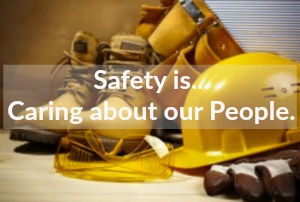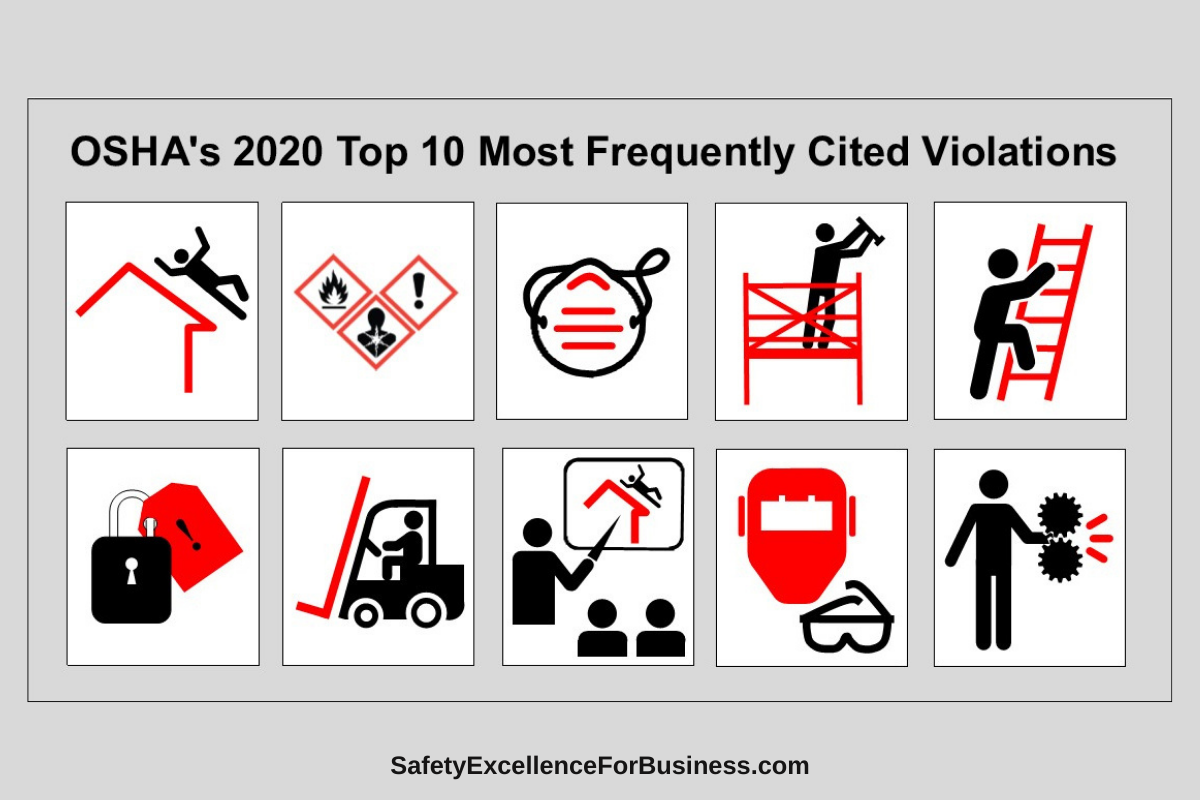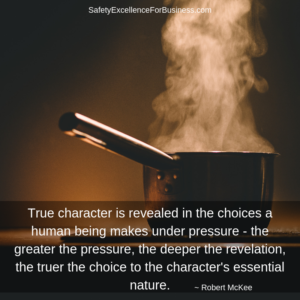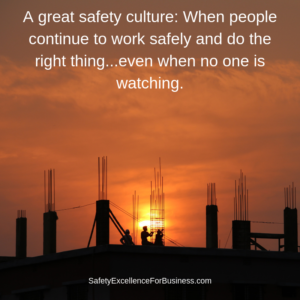It has been over 50 years since President Richard Nixon signed into law the Occupational Safety and Health (OSH) Act.
 We are all familiar with OSHA as both a regulator for Safety Standards and Compliance in the workplace and as an Educator (offering Information and Training across-the-board on the OSH standards). Indeed, if you’ve not looked lately, go to OSHA.gov and scroll through the various topics available for your learning.
We are all familiar with OSHA as both a regulator for Safety Standards and Compliance in the workplace and as an Educator (offering Information and Training across-the-board on the OSH standards). Indeed, if you’ve not looked lately, go to OSHA.gov and scroll through the various topics available for your learning.
Have you ever wondered what our workplaces might be like if OSHA had not been enacted? Would employers, on their own, protect the health and safety of their employees? If there was no law that employers “must” have PPE, or Lock & Tag, or Vessel Entry, or Machine Guards, or Eye Wash stations…would they? If there was no expectation of you, would you be your brother’s/sister’s keeper in the workplace?
You may make sport of these questions because, obviously, times have changed.
There is so much more awareness to safety, to life and limb, than in 1970 when OSHA came into fruition. And sometimes, the regulations seem like they go overboard in detail. Still, what we know deeply is that every one of the regulations was written in blood – meaning someone was killed or severely injured – and that prompted the writing of the regulation to avoid additional victims falling prey to similar work circumstances.
The standards underscore the safe way of doing things, to reduce the hazards and reduce the opportunities for being hurt, maimed, or killed. The OSHA mandated rules and procedures have had a big, positive impact in improving workplace safety. But these only get compliance in most organizations.
Today, even with the OSHA laws in place, about 5,300+ workers become victims of job-related fatalities every year. Why is that? Â Even with increasing numbers of Safety Professionals working within almost every facility, why is it that we keep killing so many people? Even with the oodles of hours of safety and health training that is conducted, why do these violations and tragedies continue?
We believe that a lot of the safety-related problems are systems problems. These are deeper than the things we can see on the surface like a specific incident or injury.
We need to dig in more deeply to find the things that are driving the surface problems. What is happening in the whole system and why? When we do this work, together, we can find things to fix that make a big, positive difference.
For example, we know that critical factors are the open flow of information for everyone, treating each other with respect and dignity and helping people to see how their work is important for the success of the whole organization. These ideas rarely show up in an incident report, yet from a systems point of view, these are huge.
We need commitments from across the organization
for improved safety.
It is all about everyone going home in one piece!
When we take a systems approach, we all get involved. The people and the company, together, working for improved safety results. Individual safety attitudes, fatigue, complacency, lack of taking responsibility, taking shortcuts and carelessness are addressed in the systems approach, and lead to fewer risks and serious injuries, even deaths.
Training must be meaningfully connected to the real work. Keeping track of injuries and incidents is also essential – why? These lagging indicators are one way to tell us if we are on the right track. But we do not use these to try to manage safety; we use leading indicators like the amount of time we spend in the field with the people, sharing information, listening, learning, solving problems and fixing them at an early stage; this is a powerful leading indicator.
We don’t want to return to the era where peoples lives or limbs accounted for little. Rather, that OSHA’s stated purpose for every company is fulfilled: “Each employer shall furnish a place of employment which is free/protected from recognized hazards that are causing or are likely to cause death or serious physical harm to their employees.”
I repeat my mantra:
“It is not okay for me to work and make my living
where it is okay for you to get hurt – physically or psychologically.
So, let’s figure it out together…how to profitably stay in business
and stay safe and secure all at the same time.”
What differentiates a good safety culture? Internalized, focused communications…up and down. It is the energetic daily conversations that are crucial for having a safe workplace and safe attitudes.
Because, through conversation you engage employees to think for themselves, in turn, focus (less auto-pilot) and ultimately, to develop a discipline where the employee thinks things through (daily), has the autonomy (choice) in addressing the perceived greatest risks, and overall, the daily conversation becomes the “muscle” – to active caring – building relationships. (And no one gets hurt!)
Plus, the more awareness of our surroundings we develop the better off we are from being surprised by workplace hazards, or from bullying emerging, or from being surprised by a perpetrator entering our workplace to do harm. Awareness matters in both the safety of doing our tasks and in the security of surveying our environment. Call me to learn more about the processes we use to heighten safety, security, effectiveness, performance. Culture matters.
With the Occupational Safety and Health Act of 1970, Congress created the Occupational Safety and Health Administration (OSHA) to ensure safe and healthful working conditions for workers by setting and enforcing standards and by providing training, outreach, education and assistance. Note: OSHA has now weighed in on Workplace Violence as any act or threat of physical violence, harassment, intimidation, or other threatening disruptive psychological behavior that occurs at the work site. It ranges from threats and verbal abuse to physical assaults and even homicide.

Top 10
- Fall Protection, construction
- Hazard Communication Standard, general industry
- Respiratory Protection, general industry
- Scaffolding, general requirements, construction
- Ladders, construction
- Control of Hazardous Energy (lockout/tagout), general industry
- Powered Industrial Trucks, general industry
- Fall Protection – Training Requirements
- Eye and Face Protection
- Machinery and Machine Guarding, general requirements
 Our businesses, our schools and hospitals, our governments, and not-for-profits, at all levels, are fractured and coming apart. Change is coming faster and faster. So many people seem to be trying to cope by pulling into their shells and trying to push the turmoil all away. The trust levels among all the various groups is very low. So many loud voices are pushing their version of the “truth” that it is almost impossible to tell who is being honest and should be listened to. How do we find the truth?
Our businesses, our schools and hospitals, our governments, and not-for-profits, at all levels, are fractured and coming apart. Change is coming faster and faster. So many people seem to be trying to cope by pulling into their shells and trying to push the turmoil all away. The trust levels among all the various groups is very low. So many loud voices are pushing their version of the “truth” that it is almost impossible to tell who is being honest and should be listened to. How do we find the truth? In thinking about your own place of work, what do you suppose it would be like if people did some of the things mentioned earlier in this newsletter? Do you think that you could begin talking with others about building a more respectful environment? What do you think it would be like if you could openly talk together about the important issues like improving the safety of your job? What would it be like if the managers and supervisors talked frequently about with everyone about how the business was doing the challenges from the competition? What would it be like if you knew that someone was looking out for your back? What would it be like if you felt you were in an environment of trust? What would it be like if people really asked important questions and talked about them? What would it be like if people in upper management asked you for your honest opinion and really listened? That’s called breaking the iceberg and engaging in authentic conversations!
In thinking about your own place of work, what do you suppose it would be like if people did some of the things mentioned earlier in this newsletter? Do you think that you could begin talking with others about building a more respectful environment? What do you think it would be like if you could openly talk together about the important issues like improving the safety of your job? What would it be like if the managers and supervisors talked frequently about with everyone about how the business was doing the challenges from the competition? What would it be like if you knew that someone was looking out for your back? What would it be like if you felt you were in an environment of trust? What would it be like if people really asked important questions and talked about them? What would it be like if people in upper management asked you for your honest opinion and really listened? That’s called breaking the iceberg and engaging in authentic conversations! For example, the workers on the Deepwater Horizon drilling platform received good recognition for outstanding occupational safety performance (the slips, trips and falls sorts of incidents) just a day or two before the explosion on April 20, 2010, that killed 11 people and injured 17 others. The pressures from top management to get into production led to failures of their process safety management (PSM) systems and processes. Communications were limited because management did not want to hear of more problems; they were driving the production schedule. The fine occupational safety performance masked the PSM deficiencies which are more subtle and invisible to upper managers, unless they are keenly aware of the needs for excellent PSM.
For example, the workers on the Deepwater Horizon drilling platform received good recognition for outstanding occupational safety performance (the slips, trips and falls sorts of incidents) just a day or two before the explosion on April 20, 2010, that killed 11 people and injured 17 others. The pressures from top management to get into production led to failures of their process safety management (PSM) systems and processes. Communications were limited because management did not want to hear of more problems; they were driving the production schedule. The fine occupational safety performance masked the PSM deficiencies which are more subtle and invisible to upper managers, unless they are keenly aware of the needs for excellent PSM. Now we have another example with the mess at Boeing and the 737 Max crashes. Top management was feeling the pressures for market share from Airbus and putting terrific pressures on cost reduction and faster production.
Now we have another example with the mess at Boeing and the 737 Max crashes. Top management was feeling the pressures for market share from Airbus and putting terrific pressures on cost reduction and faster production.




